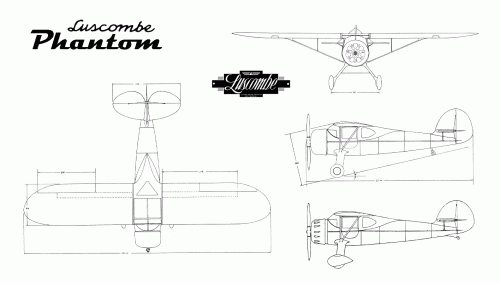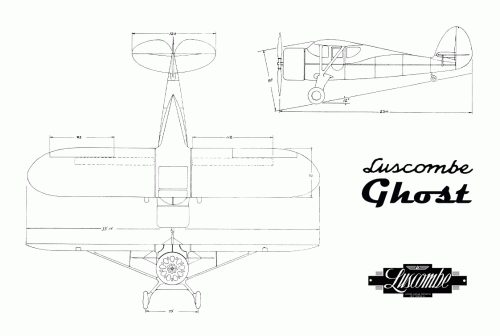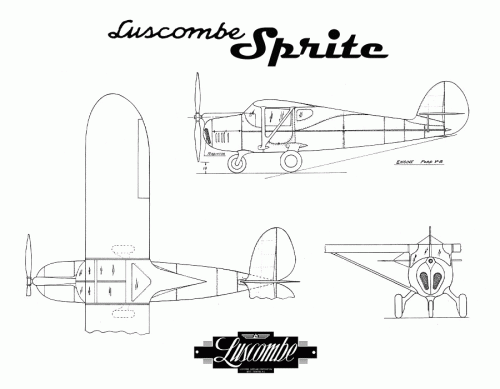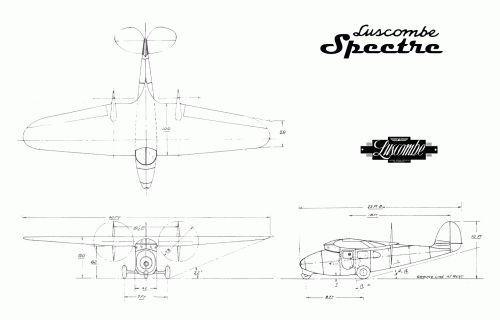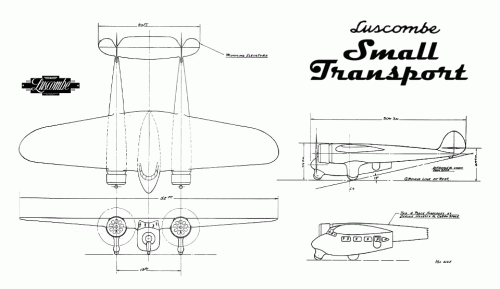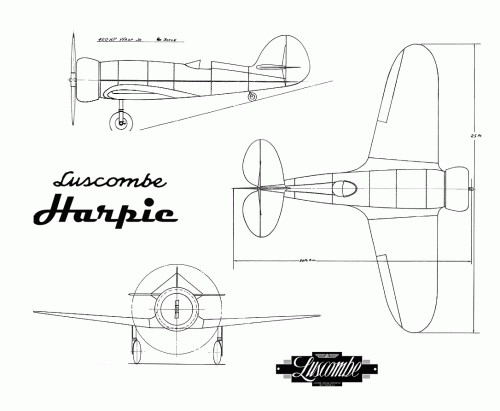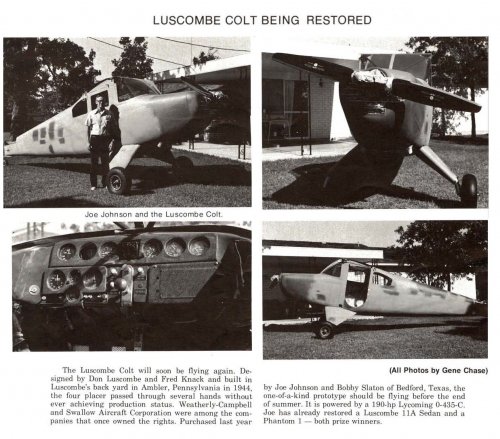- Joined
- 25 June 2009
- Messages
- 13,751
- Reaction score
- 2,945
As strange as it seems, there doesn't seem to be any topic devoted to Don A. Luscombe's marvelous designs, so here goes.
Luscombe, whom Aviation historian Walt Boyne describes as "a design genius and a brilliant merchandiser", was interested in developing a whole stable of elite aircraft from his plant in West Trenton, NJ, with the vision of setting an industry trend. Luscombe aimed his aircraft mostly to the most affluent customers, but it is ironic that the economic context of the time made the economical Silvaire the most succesful of all his designs.
In 1939, Don Luscombe was edged out of his company after public stock sales resulted in financial control being taken over. According to Boyne, "if [Luscombe] had gone for a little more capital and enjoyed a better economic climate, his parade of spectral sport planes might have found their place in the world."
Here is a list of all known Luscombe designs, both built and unbuilt:
Main sources:
NOTE: All plans attached below are original company plans reworked/enhanced from Wings (see above reference). Company logos (real) and stylized aircraft names were not in the original scans.
Luscombe, whom Aviation historian Walt Boyne describes as "a design genius and a brilliant merchandiser", was interested in developing a whole stable of elite aircraft from his plant in West Trenton, NJ, with the vision of setting an industry trend. Luscombe aimed his aircraft mostly to the most affluent customers, but it is ironic that the economic context of the time made the economical Silvaire the most succesful of all his designs.
In 1939, Don Luscombe was edged out of his company after public stock sales resulted in financial control being taken over. According to Boyne, "if [Luscombe] had gone for a little more capital and enjoyed a better economic climate, his parade of spectral sport planes might have found their place in the world."
Here is a list of all known Luscombe designs, both built and unbuilt:
- The Model 1 Phantom (1934) was an all-metal, high-performance lightplane. 25 aircraft built (Walt Boyne says between 35 and 40).
- The Ghost was a "Super Phantom", designed to carry four people and was to be powered by either a 240 hp or 420 hp radial engine. It wasn't built.
- The Sprite was intended as a low-cost design for the private pilot, powered by a Ford V-8 engine. It wasn't built.
- The Model 4 (first as Luscombe 90) (1938) was a Sprite development, sort of a reduced Phantom with the 90 hp Warner. 6 were built.
- The Spectre was to be a 5-place executive transport featuring two inline engines in pusher position. It wasn't built.
- The Small Transport corporate/feederliner project featured twin-booms, which were actually two Ghost fuselages. It wasn't built.
- The Harpie was sort of a low clipped wing Phantom with a 420 hp engine, intended as a sports racer and possibly a military pursuit. It wasn't built.
- The Model 8 (first as Luscombe 50) (1938) was a still lower priced aircraft (under)powered by the Continental A-50. It was also produced in small numbers. 113 were built.
- The Model 8A Silvaire (1939) was the same as a Luscombe 50 reengined with the more powerful 65 hp Continental. 3695 built before and after WW2.
- The Model 8A Silvaire Master (1941), developed to provide an illusion that Luscombe was producing military-contract training aircraft and so should continue receiving shipments of aircraft aluminum. One prototype built.
- The Model 8B Silvaire (1940) was essentially a Lycoming-powered Model 8A. One impressed as UC-90 by USAAF. 85 were built.
- The Model 8C Silvaire(1940) was powered by the more powerful 75hp Continental A-75-8J with fuel injection. 278 were built.
- The Model 8D Silvaire(1941) was essentially a production 8A Master with 23.5-gal fuel capacity in two wing tanks, revised instrument panel. 97 were built.
- The Model 8E Silvaire (1946) was a post-war development with 85hp Continental C-85-12F, designed to compete with the Cessna 140. 834 were built.
- The Model XT8E (1947) was developed for an Army liaison competition, but lost to the cheaper Aeronca L-16. 3 prototypes were built.
- The Model 8FSilvaire (later T8F) (1948) was the ultimate version. 379 produced, mainly by Temco, which purchased the bankrupt company's assets in 1948.
- The Model T8F Observer (1948) was a development from the XT8E prototypes and was marketed as a pipeline patrol aircraft. 73 were built.
- The Model T8F Cropmaster(1949) was a production T8F with flaps and built-in spray equipment. 35 were built, most later converted to Observer configuration.
- The Model T8F-L (1950) was an extensively modified variant for another Army liaison plane competition won by the Cessna L-19. 2 prototypes were built, later to standard configuration.
- The Model T8G-L was to be an agricultural sprayer with installation of a Boeing 502-2 turboprop engine. It was never built.
- The Model 8 Turbine was first considered by Luscombe engineers at TEMCO in 1950 but constructed by the DLAHF only in 1999. 1 prototype was built.
- The Gullwing was designed just before WW2 by Don Luscombe after leaving the company. One prototype was built in 1944, became the Weatherly-Campbell Colt. Sometimes described inadequately as the "Luscombe Colt".
- The Model 9 was to be the designation of the postwar Model 8 update, but "Model 8" was eventually retained for CAA approval.
- The Model 10 (1945) was a low wing monoplane built up from parts, with no engineering or structural analysis done. 1 prototype was built.
- The Model X11 (1946) was a four-seat development of the Model 8 with a 165hp Continental E-165, to compete with Cessna 170. 1 prototype built.
- The Model 11A Sedan(or Silvaire Sedan) (1946) was the former X11 with flaps added, and subsequent production. 90 were built.
Main sources:
- "The Ghosts from Luscombe's Drawing Boards", by Walt Boyne, in Wings, August 1976.
- http://www.aerofiles.com/_luscom.html
NOTE: All plans attached below are original company plans reworked/enhanced from Wings (see above reference). Company logos (real) and stylized aircraft names were not in the original scans.

